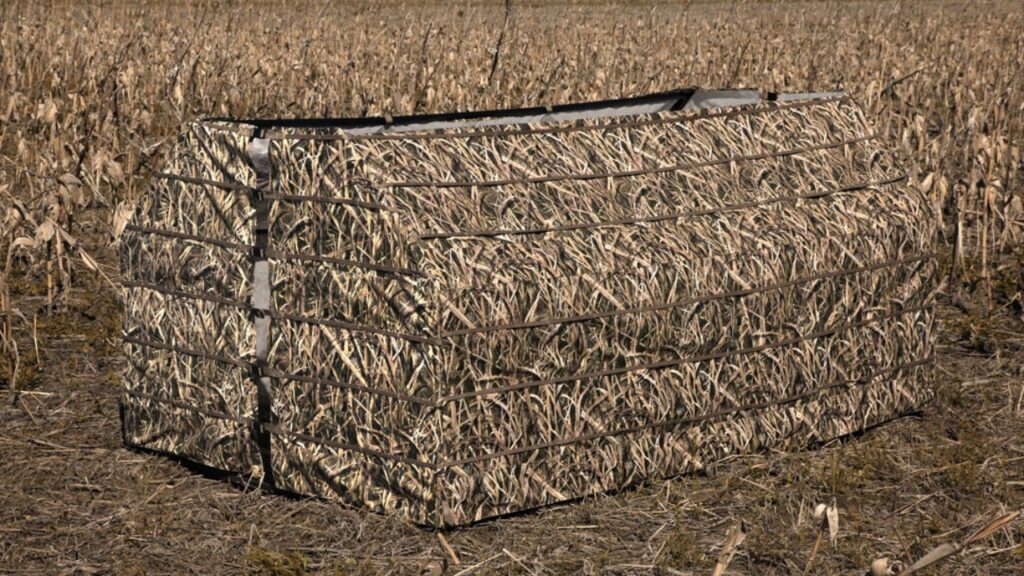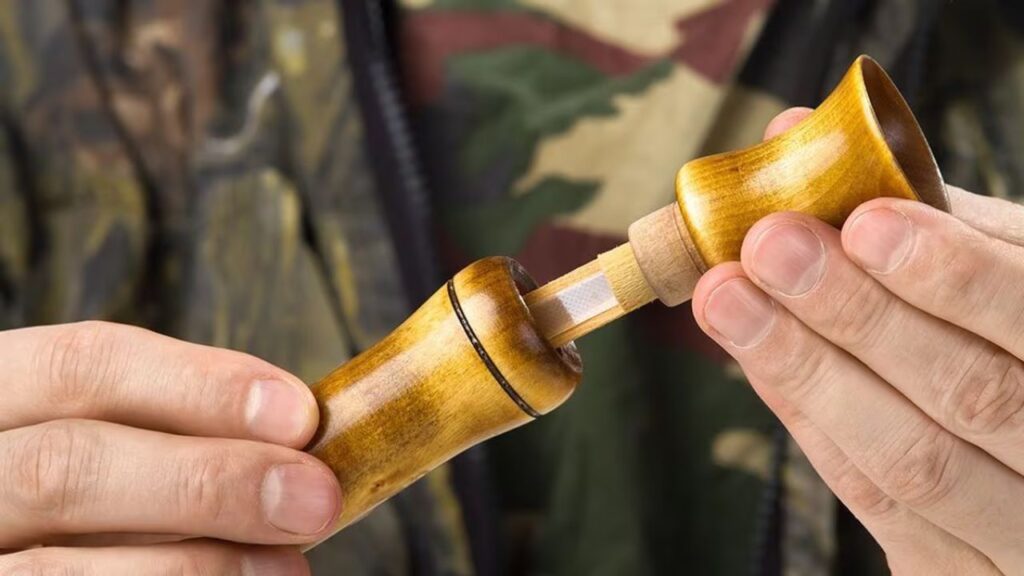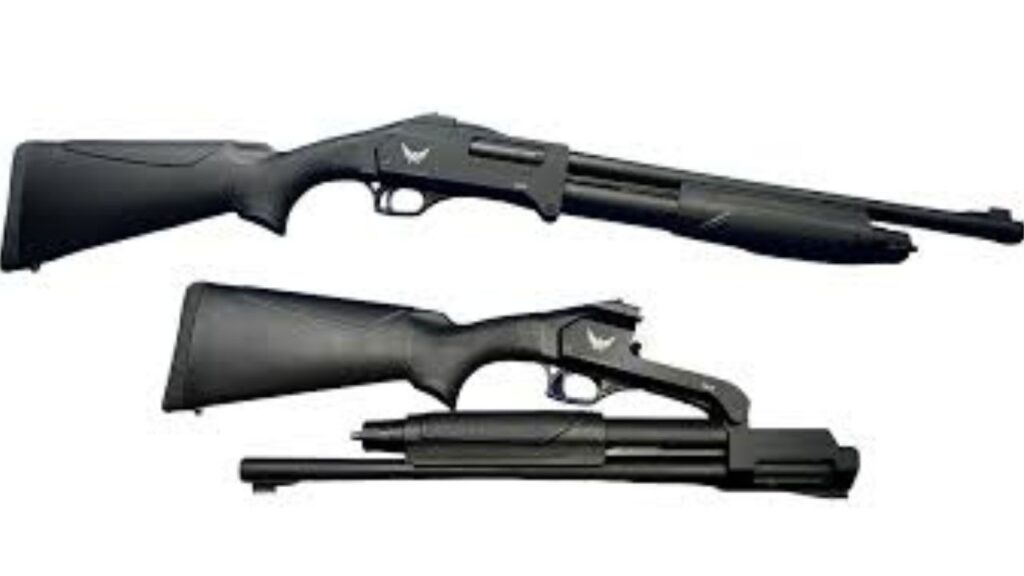In the world of 20 gauge 2 3/4 for ducks, your choice of ammunition can significantly affect your success in the field. For enthusiasts who wield a 20-gauge shotgun, the 2 3/4-inch ammunition stands out as a versatile option, offering a balance of power and accuracy.
This article is intended to provide valuable information on how to optimize your duck hunting experience with 20 gauge 2 3/4 ammo.
As we delve into five key tips, we’ll explore the nuances of selecting the right ammunition, adjusting choke settings, perfecting shot placement, ensuring safety, and honing your shooting skills.
Whether you are an experienced hunter or a newcomer to the sport, these tips will guide you to maximize your efficiency and enjoyment during duck hunting expeditions.
Join us on this journey as we solve the secrets to achieving unparalleled success with your 20 gauge 2 3 4 for ducks ammunition when hunting waterfowl.
Understanding 20 Gauge Ammunition 2 3/4

To successfully embark on a duck hunting adventure with a 20-gauge shotgun, it is essential to understand the nuances of 2 3/4-inch ammunition.
This section aims to provide a comprehensive understanding of 20 gauge tungsten waterfowl, shedding light on its specifications, advantages, and why it stands out as the preferred choice for many hunters.
Explanation of 20 gauge ammunition
The 20 gauge shotgun, characterized by 20 gauge 2 3/4 tss bore diameter, falls between the smaller 28 gauge and the more robust 12 gauge.
Despite its smaller size, the 20 gauge is known for offering a balance of power and a Reduced recoil, making it a popular choice among hunters.
Importance of the 2 3/4-inch shell
The term 20 gauge 2 3/4” high brass to the length of the shotgun shell, measured in inches. The 2 3/4-inch shell is a standard size for 20-gauge shotguns.
Understanding this specification is crucial as it directly influences factors such as pellet count, velocity, and overall performance in the field.
Advantages of 20 Gauge 2 3/4 Ammunition
- Reduced Recoil: The smaller size of the 20 gauge contributes to lower recoil, allowing for faster follow-up shots and greater accuracy.
- Versatility: The 2 3/4-inch shell strikes a balance between power and versatility, making it suitable for various waterfowl hunting scenarios.
- Adequate Payload: Despite its smaller size compared to 12 gauge, 2 3/4 gauge 20 ammunition can still carry a sufficient payload, ensuring effective hits on the target.
Understanding these aspects of 20 gauge 2 3/4 ammunition lays the foundation for making informed decisions when selecting and using ammunition for duck hunting.
In the following sections, we will delve into practical tips to further improve your proficiency with this specific ammunition in the pursuit of a successful duck hunt.
Tip 1: Select the proper 20 gauge 2 3/4 ammo
When it comes to maximizing duck hunting success with a 20-gauge shotgun and 2 3/4-inch ammunition, the first and most important consideration is selecting the correct type of ammunition.
This Tungsten Matrix tip explores the various factors and considerations to guide you in making an informed decision when choosing bismuth 20 gauge 2 3/4.
Different types and brands
Lead Shots vs. Steel Shots: Understand your hunting area’s regulations regarding lead shots. Many areas require the use of non-toxic steel shot to protect the environment.
- Shot Size: Consider shot size based on the types of ducks you are targeting. Smaller shot sizes, such as #4 or #6, are suitable for smaller ducks, while larger shot sizes, such as #2 or #BB, may be better for larger species.
- Brand Reputation: Research and choose reputable ammunition brands known for their consistent quality and performance in waterfowl hunting scenarios.
- Factors to consider
- Velocity: Check the velocity specifications of the ammunition. A balance between speed and shot size is crucial to achieving effective shots at different distances.
- Pattern Density: Evaluate the pattern density of different loads. A well-distributed pattern guarantees a higher probability of hitting the target.
- Hunting Environment: Tailor your ammunition choice to the specific hunting environment. Consider factors such as open water, dense vegetation, or varying distances.
Understand your specific hunting environment.
- Target Distance: Choose ammo that matches the average shooting distances in your hunting area. This ensures optimal performance in the range where ducks are most frequently found.
- Environmental Conditions: Consider the weather conditions in your hunting area. Wind and adverse weather may require different ammunition characteristics for consistent performance.
Selecting the right best 20 gauge waterfowl ammo involves careful analysis of your hunting preferences, local regulations, and ammunition characteristics.
By considering factors such as shot type, size, speed, and hunting environment, you can improve your chances of having a successful and ethical duck hunting experience.
In the following tips, we’ll delve into optimizing other aspects of your 2 3/4 20 gauge ammunition for even more rewarding hunting.
Tip 2: Adjust the choke for optimal performance

To further optimize your duck hunting success with 2 3/4 20 gauge ammunition, Tip 2 emphasizes the importance of adjusting your shotgun’s choke for optimal performance.
Choke settings play a critical role in determining the dispersion and pattern of your shot, which influences your ability to hit ducks effectively. Here is a detailed guide on how to adjust the choke for an improved hunting experience:
Explanation of strangulation and its impact
- Choke Basics: Understand the function of the choke: a constriction in the muzzle of your shotgun that influences pellet dispersion.
- Choke Types: Familiarize yourself with common choke types, such as full barrel, modified, and improved. Each type alters the firing pattern differently.
Recommended Choke Settings
- Modified Choke Versatility: Consider using a modified choke for 2 3/4 20 gauge ammunition. This offers a balanced pattern, suitable for a variety of duck hunting scenarios.
- Range Adjustment: Alter choke settings based on typical shooting distances in your hunting environment. Tighter chokes are ideal for longer distances, while more open chokes are suitable for closer shots.
Tips for Testing and Adjusting the Choke
- Pattern Testing: Perform pattern testing with different choke settings at different distances to determine the dispersion and density of shot patterns.
- Adapt to conditions: Adjust the choke according to weather conditions. In windy conditions, a tighter choke can provide better control over the shot pattern.
Adjusting the choke for optimal performance ensures that your 20 gauge 2 3/4 ammo works effectively at different ranges.
By understanding the impact of the choke on your shooting patterns and adapting your setup to match your hunting environment, you can significantly improve your accuracy and success in the field.
As we move forward, the following tips will delve into additional aspects to maximize your duck hunting experience with this specific ammunition.
Tip 3: Understand Shot Placement
In seeking to maximize your duck hunting success with 20 gauge 2 3/4 ammo, Tip 3 focuses on the critical aspect of shot placement.
Achieving accurate and effective shot placement is key to ensuring ethical and successful waterfowl harvesting. This tip provides information on the importance of shot placement, vital areas to target ducks, and tips for improving accuracy:
Importance of accurate shot placement
- Ethical Considerations: Emphasize the ethical responsibility of hunters to make clean, humane kills by shooting accurately.
- Minimize wound losses: Precise shot placement reduces the chances of wounding ducks without recovering them, contributing to ethical hunting practices.
Vital Areas for Effective Duck Shooting
- Head and Neck Shooting: Discuss the benefits and challenges of targeting the head and neck region. Highlight the need for precision due to the small size of the target.
- Vital Organs: Emphasize the importance of vaccines in vital organs, including the heart and lungs. This guarantees quick and humane deaths.
Tips to Improve Shot Accuracy and Placement
Practice clay pigeon shooting or similar activities to improve your accuracy and precision with moving targets.
- Understanding duck behavior: Study duck behavior to predict movements and choose optimal shooting times.
- Using Decoys: Place decoys strategically to attract ducks to areas where you have a clear shot at vital areas.
Understanding shot placement requires a combination of ethical considerations, anatomical knowledge of ducks, and practical shooting skills.
By focusing on precise areas such as the head, neck, and vital organs, hunters using 2 3/4 20 gauge ammunition can increase their chances of making clean, effective kills.
As we move forward, the following tips will delve into additional strategies to improve your duck-hunting skills with this specific ammunition.
Tip 4: Practice safe shooting techniques
Tip 4 highlights the utmost importance of practicing safe shooting techniques when using 2 3/4 20 gauge ammunition for duck hunting.
Ensuring a safe hunting environment is not only crucial to your well-being but also contributes to responsible and ethical hunting practices.
This Duck Hunt tip provides guidelines and considerations for maintaining a safe environment while pursuing waterfowl:
Emphasizing the importance of safety
- Responsible Firearm Handling: Emphasize the need to treat each firearm as if it were loaded and to follow fundamental firearm safety rules.
- Surrounding Awareness: Encourage hunters to be highly aware of their surroundings, including the location of fellow hunters and potential obstacles.
Basic safety guidelines for using a 20 gauge shotgun
- Muzzle Control: Emphasize keeping the muzzle pointed in a safe direction at all times, particularly when loading, unloading, or traversing challenging terrain.
- Trigger Discipline: Remind hunters to keep their fingers off the trigger until they are ready to shoot, minimizing the risk of accidental discharge.
Tips for Maintaining a Safe Hunting Environment
- Communication: Establish clear communication with your fellow hunters to avoid confusion and ensure everyone knows each other’s locations.
- Blind Safety: If you use blinds or blinds, make sure they are placed with clear sight lines and that all hunters are safely located inside.
Practicing safe shooting techniques is a fundamental aspect of responsible hunting. By adhering to firearm safety principles, remaining aware of your surroundings, and encouraging open communication with other hunters, you contribute to a safe environment for all involved.
As we move forward, the following tips will delve into how to hone shooting skills and optimize other aspects of duck hunting with 20 gauge 2 3/4 ammo.
Tip 5: Perfect your shooting skills
Tip 5 delves into the importance of honing your shooting skills when using 2 3/4 20 gauge ammunition for duck hunting. Improving your aim is essential to increasing the likelihood of successful and ethical catches. This tip provides practical strategies and exercises to help hunters hone their shooting skills:
Importance of perfecting shooting skills
- Higher success rates: Emphasize how improved shooting skills lead to higher success rates when hitting targets, especially in dynamic hunting environments.
- Ethical Harvesting: Highlight the ethical responsibility of minimizing the chances of injuring ducks through accurate and effective shooting.
Target Practice and Drills Specifically Designed for 20 Gauge 2 3/4 Ammunition
- Clay Pigeon Shooting: Engage in regular clay pigeon shooting sessions to improve tracking, leadership and accuracy of moving targets.
- Clay Pigeon Shooting: Practice shooting clay pigeons, imitating duck flight patterns. This helps improve timing and accuracy.
- Simulated Hunting Scenarios: Set up simulated hunting scenarios to practice shooting under conditions similar to those found in the field.
Using shooting ranges and simulated hunting scenarios to improve
- Distance Variation: Practice shooting at different distances to suit different hunting situations.
- Adverse Weather Conditions: Train in adverse weather conditions to develop the ability to shoot effectively in challenging environments.
By constantly honing your shooting skills through simulations and guided practice, you will improve your ability to make accurate shots during real duck hunting expeditions.
Regular practice not only improves your aim but also builds confidence, ensuring that you are well-prepared for various scenarios in the field.
Cleaning and maintaining your 20″ gauge shotgun
Proper cleaning and maintenance of your 20 gauge shotgun is essential for optimal performance and longevity. Regular care ensures that the firearm functions reliably during crucial times in the field.
To clean your 20 gauge shotgun, start by making sure it is unloaded and follow these steps: Start with a thorough visual inspection, checking for signs of wear, corrosion or damage.
Disassemble the shotgun according to the manufacturer’s instructions, paying special attention to the barrel, receiver, and action components.
Clean the cask with a brush and solvent to remove dirt and debris. A cleaning stick with patches can be used for additional cleaning and to ensure the barrel is free of debris.
Wipe the receiver and action with a solvent-soaked cloth to remove any dirt or grime. Pay attention to the trigger assembly and other moving parts.
Inspect and lubricate all moving parts with a suitable gun oil to prevent corrosion and ensure smooth operation.
Reassemble the shotgun and test it to confirm that everything is in working order.
Periodically check and replace worn parts, such as O-rings or recoil pads, and store the shotgun in cool, dry conditions to prevent rust.
Conclusion
In conclusion, mastering the art of duck hunting with 20 gauge 2 3/4 ammunition involves a holistic approach, encompassing ammunition selection, choke adjustments, shot placement, safety practices, and continued skill refinement.
Understanding the intricacies of 20 gauge 2 3/4 ammunition, from its specifications to the advantages it offers, lays the foundation for a successful hunting experience.
Selecting the right ammunition is just the beginning; Adjusting the choke for optimal patterns, perfecting shot placement skills, and practicing safe shooting techniques all contribute to ethical and effective waterfowl harvesting.
Emphasizing safety in all aspects of hunting ensures a safe environment for hunters and their peers. Additionally, the path to proficiency extends to honing shooting skills through guided practice, simulated scenarios, and familiarity with shotgun mechanics.
Regular maintenance is key to preserving shotgun reliability and performance. In the quest to maximize duck hunting success with 20 gauge 2 3/4 ammunition, a harmonious combination of knowledge, skill, and responsible practices is paramount.
By combining these tips into your hunting routine, you will venture on a rewarding journey that will not only enhance your success but also uphold the values of ethical and sustainable hunting.
May your future duck hunting endeavors be marked by precision, safety and the gratification of a well-executed hunt.














One thought on “5 Tips For Maximizing Your Duck Hunting Success with 20 Gauge 2 3/4 for Ducks Ammo”